



Touch each icon to get the information.
How to get there
**1. From Praça do Comércio (Commerce Square):**
– Walk to the bus stop “Praça do Comércio” (located near the square).
– Take bus number 737 heading towards “Estação Santa Apolónia.”
– Get off at the “Panteão Nacional” stop.
**2. From Praça da Figueira (Figueira Square):**
– Proceed to the bus stop “Praça da Figueira” (near the square).
– Board bus number 737 going towards “Estação Santa Apolónia.”
– Alight at the “Panteão Nacional” stop.
**3. From Rua Augusta (Augusta Street):**
– Go to the bus stop “Rua Augusta” (located on the pedestrian street).
– Take bus number 737 heading towards “Estação Santa Apolónia.”
– Disembark at the “Panteão Nacional” stop.
**4. From Avenida da Liberdade (Liberty Avenue):**
– Walk to the bus stop “Avenida da Liberdade” (near the main avenue).
– Catch bus number 737 going towards “Estação Santa Apolónia.”
– Get off at the “Panteão Nacional” stop.
From the Yellow Station:
1. Take the metro on the yellow line heading towards Rato.2. At Marquês de Pombal Station, change to the blue line in the direction of Santa Apolónia.
3. Get off at Santa Apolónia Station.
4. Exit the station and walk 15-20 minutes to the National Pantheon.
From the Blue Station:
1. Take the metro on the blue line heading towards Santa Apolónia.
2. Get off at Santa Apolónia Station.
3. Exit the station and walk 15-20 minutes to the National Pantheon.
From the Red Station:
1. Take the metro on the red line heading towards S. Sebastião.
2. At S. Sebastião Station, change to the blue line in the direction of Santa Apolónia.
3. Get off at Santa Apolónia Station.
4. Exit the station and walk 15-20 minutes to the National Pantheon.
From the Green Station:
1. Take the metro on the green line heading towards Cais do Sodré.
2. At Baixa-Chiado Station, change to the blue line in the direction of Santa Apolónia.
3. Get off at Santa Apolónia Station.
4. Exit the station and walk 15-20 minutes to the National Pantheon.
From Oriente Station:
From Oriente Station, purchase a valid train ticket to “Santa Apolónia” station.
Board the train heading towards “Santa Apolónia”.
Alight at “Santa Apolónia” station.
Exit the station and walk approximately 15-20 minutes towards the National Pantheon.
Please note that “Santa Apolónia” station is the closest to the National Pantheon and is about a 15-20 minute walk away. As always, check train schedules and available options before your journey to ensure a smooth experience.
Once you arrive at the site, listen to a brief explanation of the history of the place.
- Audio in English
- Audio en français
- Audio en Español
- Audio auf Deutsch
The National Pantheon, known in Portuguese as the “Panteão Nacional,” is a truly remarkable monument with a rich history dating back centuries. Originally built as the Church of Santa Engrácia, this architectural masterpiece underwent several transformations before becoming the Pantheon we see today.
Construction of the church began in the late 17th century but faced numerous challenges and delays, including financial difficulties and changes in architectural plans. It was not until the 20th century that the building was finally completed and designated as the National Pantheon, honoring prominent figures in Portuguese history.
Within these walls, you will find the final resting place of many influential Portuguese individuals. From kings and queens to poets and explorers, the Pantheon serves as a tribute to the nation’s most distinguished citizens. One notable figure buried here is Amália Rodrigues, often referred to as the “Queen of Fado,” who played a major role in popularizing this traditional Portuguese musical genre.
As we stroll through the grand halls and elegant chapels, take a moment to appreciate the impressive architecture. The central dome, which dominates the interior, is an engineering marvel adorned with intricate artwork reflecting Baroque and Neoclassical styles. The interior of the dome offers breathtaking views of Lisbon, making it a unique vantage point to admire the beauty of the city.
Throughout its history, the Pantheon has had several uses. It served as a barracks, a military hospital, and even a warehouse. It was not until 1966 that it was officially inaugurated as the National Pantheon, dedicated to honoring people who have made significant contributions to Portuguese culture and history.
Le Panthéon national, connu en portugais sous le nom de “Panteão Nacional”, est un monument vraiment remarquable avec une histoire riche remontant à des siècles. À l’origine construit comme l’église de Santa Engrácia, ce chef-d’œuvre architectural a subi plusieurs transformations avant de devenir le Panthéon que nous voyons aujourd’hui.
La construction de l’église a débuté à la fin du XVIIe siècle mais a fait face à de nombreux défis et retards, notamment des difficultés financières et des changements dans les plans architecturaux. Ce n’est qu’au XXe siècle que le bâtiment a finalement été achevé et désigné comme le Panthéon national, en l’honneur de personnalités éminentes de l’histoire portugaise.
À l’intérieur de ces murs, vous trouverez le lieu de repos final de nombreux individus portugais influents. Des rois et des reines aux poètes et aux explorateurs, le Panthéon rend hommage aux citoyens les plus distingués de la nation. Une figure notable enterrée ici est Amália Rodrigues, souvent appelée la “Reine du Fado”, qui a joué un rôle majeur dans la popularisation de ce genre musical traditionnel portugais.
Alors que nous nous promenons dans les grandes salles et les chapelles élégantes, prenez un moment pour apprécier l’architecture impressionnante. Le dôme central, qui domine l’intérieur, est une merveille d’ingénierie ornée d’œuvres d’art complexes reflétant les styles baroque et néoclassique. L’intérieur du dôme offre des vues à couper le souffle de Lisbonne, en faisant un point de vue unique pour admirer la beauté de la ville.
Tout au long de son histoire, le Panthéon a eu plusieurs utilisations. Il a servi de caserne, d’hôpital militaire et même d’entrepôt. Ce n’est qu’en 1966 qu’il a été officiellement inauguré en tant que Panthéon national, dédié à honorer les personnes ayant apporté des contributions significatives à la culture et à l’histoire portugaises.
El Panteón Nacional, conocido en portugués como el “Panteão Nacional”, es un monumento realmente notable con una historia rica que se remonta a siglos atrás. Originalmente construido como la Iglesia de Santa Engracia, esta obra maestra arquitectónica experimentó varias transformaciones antes de convertirse en el Panteón que vemos hoy.
La construcción de la iglesia comenzó a finales del siglo XVII pero enfrentó numerosos desafíos y retrasos, incluidas dificultades financieras y cambios en los planes arquitectónicos. No fue hasta el siglo XX que el edificio finalmente se completó y se designó como el Panteón Nacional, en honor a figuras prominentes de la historia portuguesa.
Dentro de estas paredes, encontraréis el lugar de descanso final de muchos individuos portugueses influyentes. Desde reyes y reinas hasta poetas y exploradores, el Panteón sirve como homenaje a los ciudadanos más distinguidos de la nación. Una figura notable enterrada aquí es Amália Rodrigues, a menudo llamada la “Reina del Fado”, quien desempeñó un papel importante en la popularización de este género musical tradicional portugués.
Mientras paseamos por las grandes salas y las elegantes capillas, tomad un momento para apreciar la impresionante arquitectura. La cúpula central, que domina el interior, es una maravilla de la ingeniería adornada con obras de arte intrincadas que reflejan los estilos barroco y neoclásico. El interior de la cúpula ofrece vistas impresionantes de Lisboa, convirtiéndose en un punto de vista único para admirar la belleza de la ciudad.
A lo largo de su historia, el Panteón ha tenido varios usos. Fue utilizado como cuartel, hospital militar e incluso almacén. No fue hasta 1966 que se inauguró oficialmente como Panteón Nacional, dedicado a honrar a las personas que han realizado contribuciones significativas a la cultura y la historia portuguesas.
Das Nationale Pantheon, bekannt auf Portugiesisch als das “Panteão Nacional”, ist ein wahrlich bemerkenswertes Monument mit einer reichen Geschichte, die Jahrhunderte zurückreicht. Ursprünglich erbaut als die Kirche Santa Engrácia, hat dieses architektonische Meisterwerk mehrere Transformationen durchlaufen, bevor es das Pantheon wurde, das wir heute sehen.
Der Bau der Kirche begann im späten 17. Jahrhundert, aber er stand vor zahlreichen Herausforderungen und Verzögerungen, einschließlich finanzieller Schwierigkeiten und Änderungen in den architektonischen Plänen. Erst im 20. Jahrhundert wurde das Gebäude schließlich fertiggestellt und als Nationales Pantheon bezeichnet, das bedeutende Persönlichkeiten der portugiesischen Geschichte ehrt.
Innerhalb dieser Mauern findet ihr den letzten Ruheort vieler einflussreicher portugiesischer Persönlichkeiten. Vom Königen und Königinnen bis zu Dichtern und Entdeckern dient das Pantheon als Tribut an die herausragendsten Bürger der Nation. Eine bemerkenswerte Figur, die hier begraben liegt, ist Amália Rodrigues, oft als die “Königin des Fado” bezeichnet, die eine bedeutende Rolle bei der Popularisierung dieses traditionellen portugiesischen Musikgenres spielte.
Während wir durch die prächtigen Säle und eleganten Kapellen schlendern, nehmt euch einen Moment, um die beeindruckende Architektur zu schätzen. Die zentrale Kuppel, die das Innere dominiert, ist ein ingenieurtechnisches Meisterwerk, verziert mit kunstvollen Werken, die die Stile des Barock und des Neoklassizismus widerspiegeln. Das Innere der Kuppel bietet atemberaubende Ausblicke auf Lissabon und ist somit ein einzigartiger Aussichtspunkt, um die Schönheit der Stadt zu bewundern.
Im Laufe seiner Geschichte hatte das Pantheon verschiedene Verwendungen. Es diente als Kaserne, militärisches Krankenhaus und sogar Lagerhaus. Erst im Jahr 1966 wurde es offiziell als Nationales Pantheon eingeweiht und widmet sich der Ehrung von Menschen, die bedeutende Beiträge zur portugiesischen Kultur und Geschichte geleistet haben.
Closest Nearby Destination: Discover the Next Stop from Here
“Cacilhas: Exploring the Charms of this Enchanting Destination”
Related products
-

Cascais: Coastal Charm and Portuguese Treasure
-

Sintra: A Fairytale Escape into Enchanting Palaces and Mystical Landscapes
- Lisboa, Architecture, Castles, Gardens and Parks, Historic Sites, Historical Monuments, Landmarks, Places, Viewpoints
-

Cabo da Roca: Embracing Europe’s Westernmost Point and Nature’s Majestic Edge
-
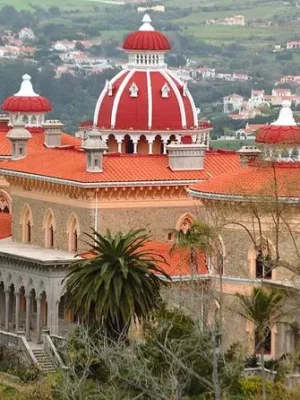
The Splendor of Monserrate Palace in Sintra: An Architectural Treasure amidst Exotic Gardens
- Lisboa, Architecture, Castles, Gardens and Parks, Historic Sites, Historical Monuments, Landmarks, Places

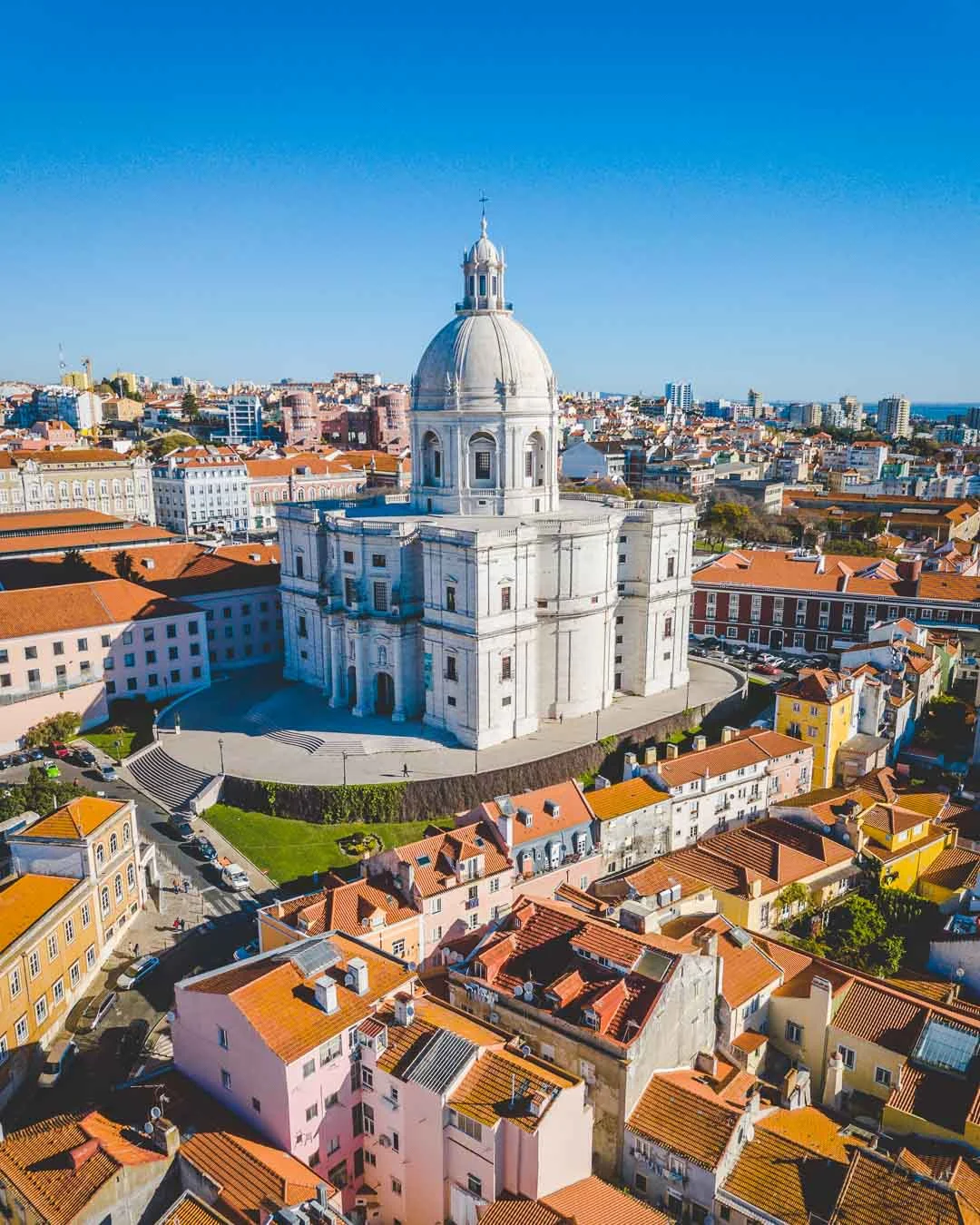
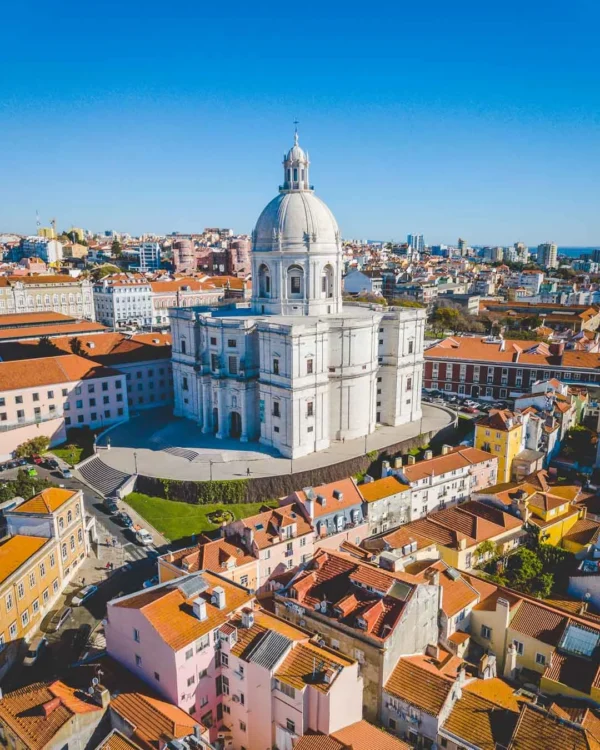
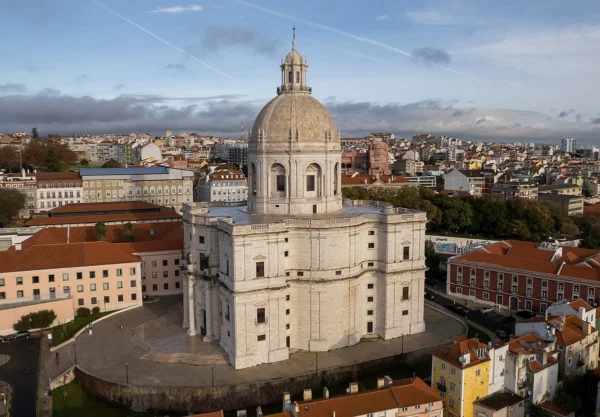
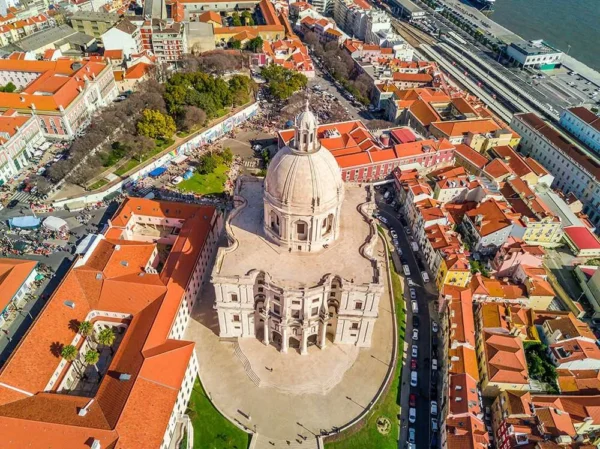
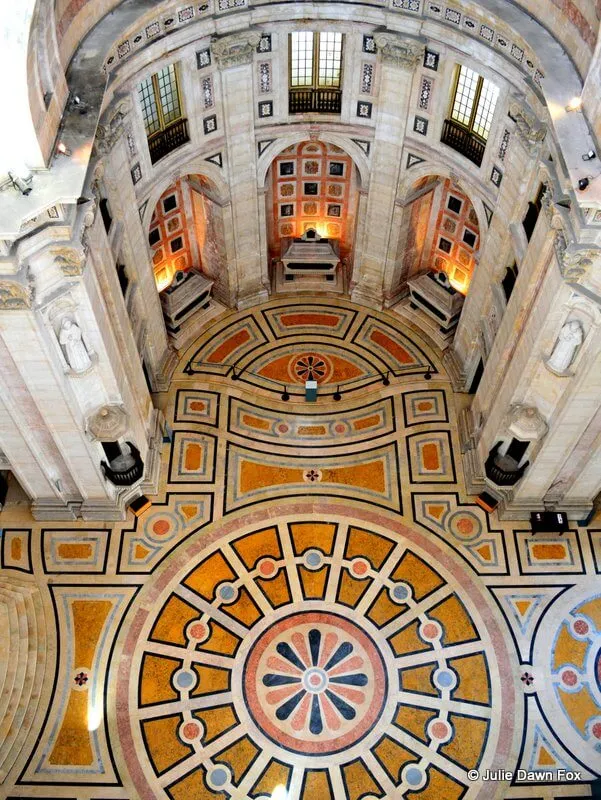








Reviews
There are no reviews yet.